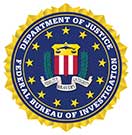|

 |
FBI
Animal Cruelty
Collecting Data
on Crimes Against Animals
02/01/16
Acts of cruelty against animals are now counted alongside felony crimes
like arson, burglary, assault, and homicide in the FBI’s expansive
criminal database.
On January 1, the Bureau’s National Incident-Based Reporting System
(NIBRS) began collecting detailed data from participating law
enforcement agencies on acts of animal cruelty, including gross
neglect, torture, organized abuse, and sexual abuse. Before this year,
crimes that involved animals were lumped into an “All Other Offenses”
category in the FBI’s Uniform Crime Reporting (UCR) Program’s annual
Crime in the United States report, a survey of crime data provided by
about 18,000 city, county, state, tribal, and federal law enforcement
agencies.
By adding animal cruelty offenses to NIBRS, law enforcement agencies
and the advocacy groups that pushed for the inclusion in the FBI
database are hoping the results will reveal a more complete picture of
the nature of cruelty to animals.
“Some studies say that cruelty to animals is a precursor to larger
crime,” said Nelson Ferry, who works in the Bureau’s Criminal
Statistics Management Unit, which manages NIBRS. “That’s one of the
items that we’re looking at.”
The National Sheriffs’ Association was a leading advocate for adding
animal cruelty as a data set in the Bureau’s collection of crime
statistics. The association for years has cited studies linking animal
abuse and other types of crimes—most famously, murders committed by
serial killers like Ted Bundy, Jeffrey Dahmer, and the “Son of Sam”
killer David Berkowitz. The organization also points out the overlap
animal abuse has with domestic violence and child abuse.
“If somebody is harming an animal, there is a good chance they also are
hurting a human,” said John Thompson, deputy executive director of the
National Sheriffs’ Association. “If we see patterns of animal abuse,
the odds are that something else is going on.”
A first look at NIBRS animal cruelty statistics will be available next
year, but it will take at least three to five years for the data to
begin showing helpful patterns. Groups that advocated for the new
animal cruelty data hope that by adding it to NIBRS—rather than the
summary-based statistics agencies provide the Bureau each year—they
will get a much richer data set from which to mine. That’s because
NIBRS requires participating agencies to not only report crimes but
also all the circumstances of a crime. Additionally, the Bureau plans
to phase out summary-based UCR statistics—which have been collected
roughly the same way since 1930—in favor of NIBRS by 2021.
“With summary data, all I can tell you is a crime occurred,” said Amy
Blasher, who is leading the broader transition to NIBRS at the FBI’s
Criminal Justice Information Services Division, keeper of the Bureau’s
various crime data stores. “With the incident-based, it’s more
granular. It tells the story.”
The move to collect more granular data requires agencies to adjust how
they track and disseminate crime statistics. Only about 31 percent of
the country is represented in NIBRS today—a fraction of the overall UCR
participants; however, Blasher anticipates the figure to grow larger as
law enforcement agencies opt in, including police departments in
Washington, D.C. and Chicago over the next two years. The FBI is
aggressively pushing for the transition to NIBRS. In a speech last
March in Atlanta, FBI Director James Comey said it was his personal
mission to get better data “that we can all use to have informed
conversations about the most important issues we face.”
Those who lobbied for better animal abuse data would agree. “With this
information, law enforcement and victim services would be able to
better target their intervention efforts with respect to both animal
cruelty and those crimes for which animal cruelty serves as a marker,”
said Dr. Mary Lou Randour of the Animal Welfare Institute, which worked
closely with the National Sheriffs’ Association to advance their cause.
“Identifying and analyzing animal cruelty crimes would provide an
important tool for law enforcement.”
The National Sheriffs’ Association’s John Thompson urged people to shed
the mindset that animal cruelty is a crime only against animals. “It’s
a crime against society,” he said, urging all law enforcement agencies
to participate in NIBRS. “By paying attention to [these crimes], we are
benefiting all of society.”
|
|
|
|

